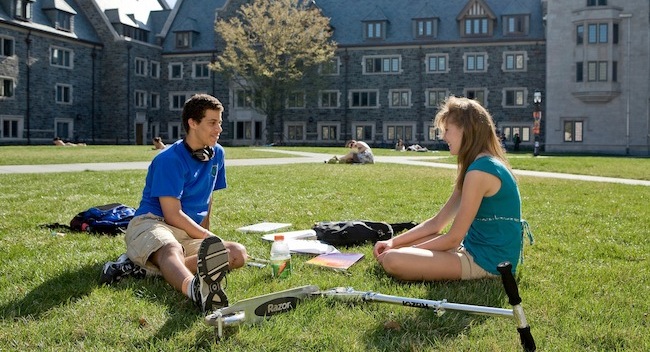I wish I could say that Jack Wertheimer (“Intermarriage: Can Anything Be Done?”) is dead wrong. I wish I could join those in the intermarriage outreach industry who dismiss his arsenal of statistics and chastise him for driving away the intermarried with undue pessimism and an insufficiently “welcoming” attitude. But I can’t. Wertheimer is dead right in asserting that “the American Jewish community is in a fight for its life”—and that the champions of outreach have sold us a flawed model and false hopes.
Admittedly, I’m far from an impartial observer, having served in Jewish leadership positions for nearly fifteen years and watched as not a few programs for the intermarried trumpeted success while largely falling flat. As a director of a Jewish federation, I counseled distraught spouses as well as the parents, grandparents, and children of intermarriage seeking advice for insoluble problems that few Jewish communal leaders would even wish to acknowledge.
I also know intermarriage from the inside. When I met my wife, I was a lobster-eating, Jewishly illiterate, twice-a-year Jew. For her part, she had been raised in a devout Christian home and served as minister of music in a Texas mega-church. Today, a great deal of water having flowed under the bridge, we are an observant Jewish family living in Israel.
Unlike most advocates of intermarriage outreach, then, I have the advantage of knowing exactly what it’s like both to have stood on either side of the divide and to have traversed the substantial gap between them. My wife and I, as Wertheimer notes, have also written about our journey in our book Doublelife: One Family, Two Faiths, and a Journey of Hope, putting pen to paper to offer a living example of how Judaism can transform an intermarriage. Over the years, we have encountered numerous families like ours, and many more interested in the possibility of living a Jewish life. Even as the outreach industry preaches the gospel of a no-obligation “open tent,” these families must search long and hard for the encouragement and help they need in order to embrace Judaism unambiguously.
In writing Doublelife, we also sought to address a pressing question, albeit one habitually sidestepped by those in the business of intermarriage outreach: what is the point of being Jewish? For, if we cannot articulate a coherent answer to this most basic of questions, then nothing else matters.
Wertheimer cites the 2000 NJPS statistic that over one million Americans of Jewish descent identify themselves as Christians. These Christians, not to speak of all those descendants of Jews who are no longer of any religion, are undoubtedly nice people. But is it enough for our progeny to be nice people, whatever their religious affiliation may or may not happen to be? If there is no compelling reason to be Jewish, if Judaism has no unique mission, no unique message, no unique destiny that can be realized only by Jews practicing Judaism—then yes, it will have to be enough. Words like “inclusion” and “welcoming” are so many empty slogans when a large portion of our community is unable or unwilling to articulate just what it is welcoming people into.
To be fair, when intermarriage and assimilation began to reach epic proportions decades ago, the outreach approach, pioneered by well-intentioned professionals in the hope of persuading more intermarried families to join the Jewish community and raise their children as Jews, seemed to make sense. With few historical models to guide them, their experiment with inclusion may have been worth a try.
But today, as Wertheimer writes, the results are in: the lopsided focus on welcoming has turned out to be unproductive at best, while the offer of a no-strings-attached Judaism, blurring boundaries between Jew and non-Jew and going beyond accepting intermarriage to actually celebrating it, has been a monumental failure. And yet, in the face of this failure, the outreach experimenters, instead of reconsidering and retooling, have calcified and turned increasingly inflexible. As one senior Reform rabbi confided to me, “I have found them to be a somewhat jealous bunch. They don’t always like to share their toys in the sandbox.” If my own experience is any guide, that sandbox is heavily guarded.
One might think that advocates of outreach, given the collapse of their decades-old experiment, would be interested in learning more about the success stories—i.e., those families who have chosen, as we did, to become fully Jewish. What drew them to embrace Jewish life? What did they find that impelled them to enter wholeheartedly into its practices and beliefs? Which communal approaches—what kinds of welcoming—succeeded with them, and which didn’t? The answers to these questions could provide the rich vein of information needed to help the Jewish community attract intermarried families to Judaism more effectively and in greater numbers.
That has not happened. In response to Doublelife, one prominent professional, instead of pondering how an intermarried family’s journey to Judaism might inform his own work, simply warned Jewish leaders not to waste their time on analyses like ours: no movement to embrace Judaism, he averred, was “likely to happen in anything but a marginal fraction of the large intermarried population.” Another was even blunter, devoting an entire article to rebutting our ideas for new approaches, insisting that the rate of intermarried participation in Jewish life was “skyrocketing,” and upbraiding us for inventing “false dichotomies” between Jews and non-Jews. As a third prominent intermarriage advocate has repeatedly asserted, intermarried families raising children with any form of Judaism are, by definition, “Jewish families.”
If these critics are right, what need for outreach at all?
The time has come to try a different path, one that abandons the hollow and historically ineffective rhetoric of “welcoming” and replaces it with an approach firmly aimed at Jewish transformation. Practically speaking, if we want better results, we might start with Wertheimer’s call to invite families who have traversed the road from intermarriage to Jewish marriage to share their stories with communities around the country. Inspired by such stories, as well as by continued contact with the families who tell them, might not some proportion of the intermarried be moved to deepen their connection with Judaism, whether or not actual conversion is in the offing? Why not bring together groups of intermarried families for intensive Shabbatons filled with learning, conversation, and camaraderie? Why not in-depth learning trips to Israel? Once the goal is understood to be not passive acceptance but active transformation, the possibilities become endless.
The American Jewish community faces a momentous decision. Disengaging from the old ways of the outreach industry will be difficult. But the crisis is grave; if there is to be a vibrant Jewish future, there is no choice but to try.
________________________
Harold Berman is the former executive director of the Jewish Federation of Western Massachusetts. He and his wife Gayle are the founders of J-Journey.org, a support system for intermarried families who seek to become observant Jews. They are currently working on their second book, focused on women converts now living in Israel.
More about: Intermarriage, Jack Wertheimer, Jewish marriage





